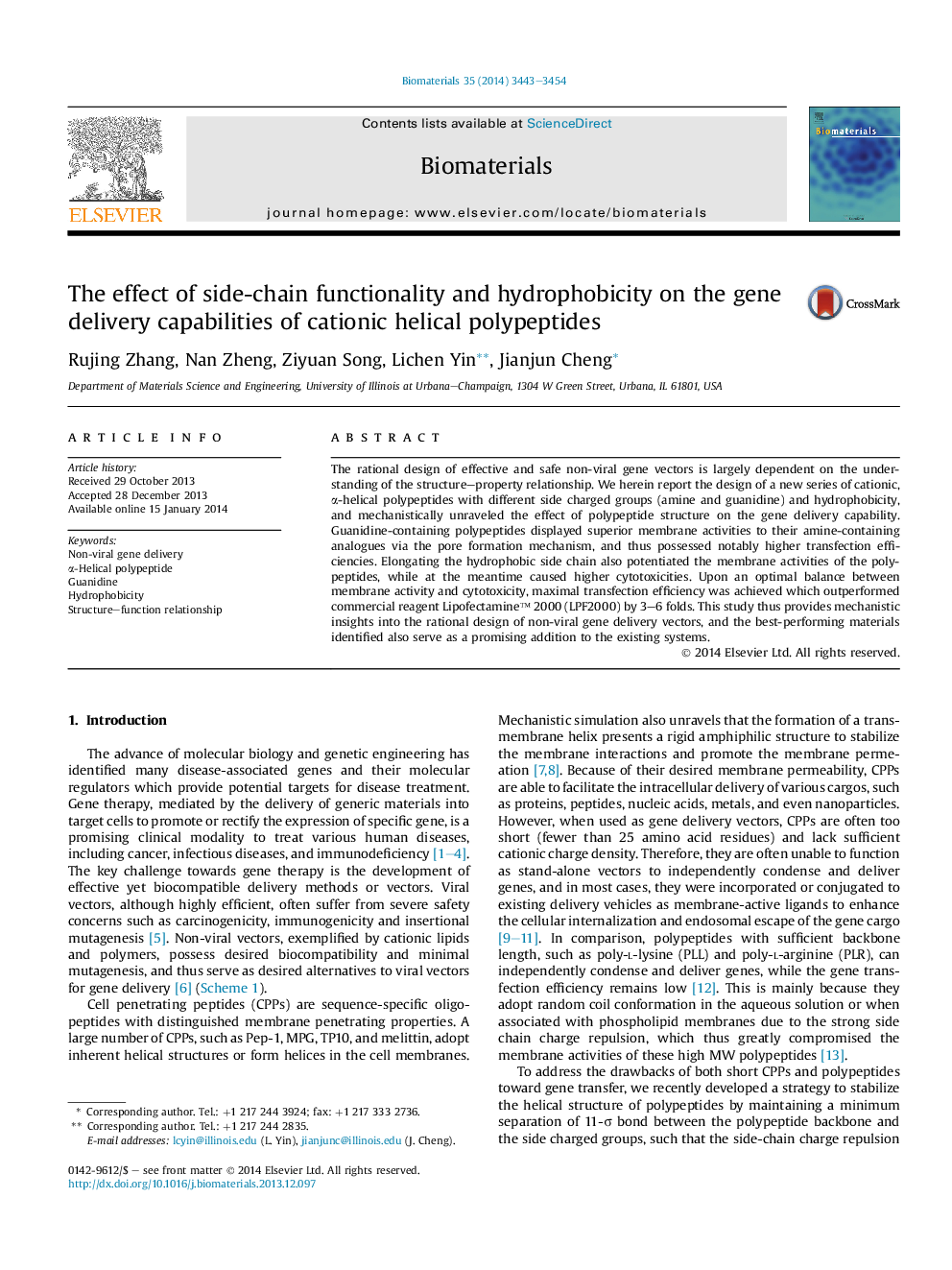| Article ID | Journal | Published Year | Pages | File Type |
|---|---|---|---|---|
| 10227967 | Biomaterials | 2014 | 12 Pages |
Abstract
The rational design of effective and safe non-viral gene vectors is largely dependent on the understanding of the structure-property relationship. We herein report the design of a new series of cationic, α-helical polypeptides with different side charged groups (amine and guanidine) and hydrophobicity, and mechanistically unraveled the effect of polypeptide structure on the gene delivery capability. Guanidine-containing polypeptides displayed superior membrane activities to their amine-containing analogues via the pore formation mechanism, and thus possessed notably higher transfection efficiencies. Elongating the hydrophobic side chain also potentiated the membrane activities of the polypeptides, while at the meantime caused higher cytotoxicities. Upon an optimal balance between membrane activity and cytotoxicity, maximal transfection efficiency was achieved which outperformed commercial reagent Lipofectamine⢠2000 (LPF2000) by 3-6 folds. This study thus provides mechanistic insights into the rational design of non-viral gene delivery vectors, and the best-performing materials identified also serve as a promising addition to the existing systems.
Related Topics
Physical Sciences and Engineering
Chemical Engineering
Bioengineering
Authors
Rujing Zhang, Nan Zheng, Ziyuan Song, Lichen Yin, Jianjun Cheng,
